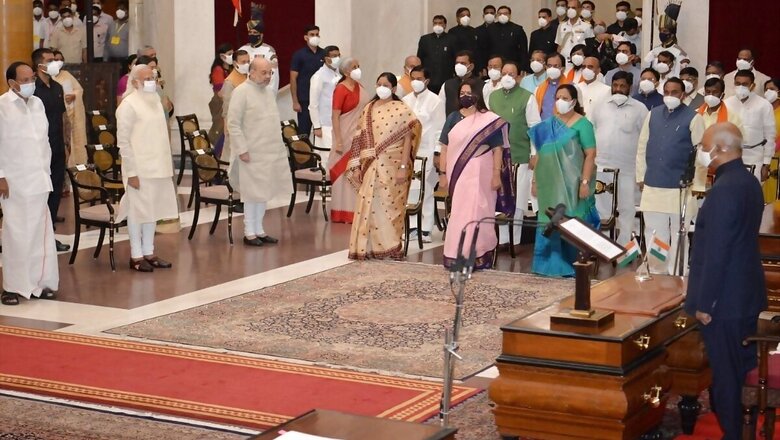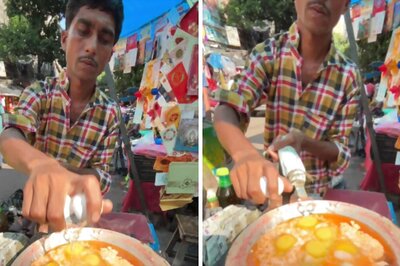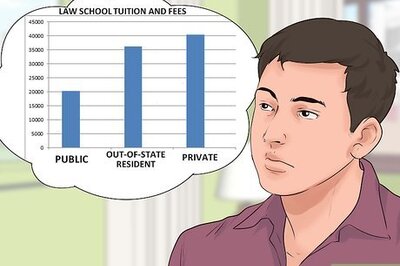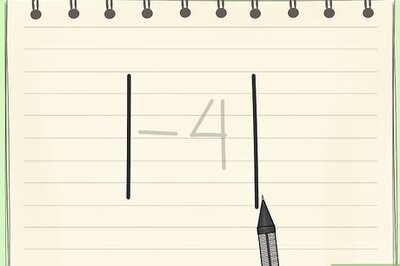
views
Well before Prime Minister Narendra Modi’s new council of ministers was sworn in, it was made known, through both official and non-official sources, that this team would have a high representation of Other Backward Classes (OBCs) and Scheduled Castes. The revamped Cabinet, it was repeatedly said, would send out an unambiguous message that the Modi government is pro-poor, pro-Dalit and pro-OBC.
True to word, when the list of these 43 ministers was officially released, the line-up of Dalits and backward classes was indeed impressive. It included as many as 27 ministers from the backward classes, drawn from a wide spectrum of sub-castes like the Yadavs, Kurmis, Kolis, Darjis and Vokkaligas.
Similarly, the new team also saw the induction of 12 ministers from the Dalit community drawn from eight states including Uttar Pradesh, Bihar, West Bengal, Maharashtra and Karnataka. As in the case of the OBCs, the Dalit groups which have been given representation belong to different sub-groups like the Pasis, Khatiks, Koris, Mahars, Meghwals and Matuas. Tribals were also given pride of place in the new-look council of ministers.
While the inclusion of such a large number of members from the backward classes and scheduled castes was inevitable given their sizeable presence in the BJP ranks, Wednesday’s exercise has effectively positioned Narendra Modi as a champion of the OBCs which, the party believes, will serve it well in the short run in the Uttar Pradesh Assembly poll next year and subsequently in the 2024 Lok Sabha elections.
The Poll Arithmetic
It can hardly be overemphasized that it is critical for the BJP to register a handsome victory in Uttar Pradesh once again as these results have the potential to impact the 2024 general election. The 71 and 62 seats it won in the last two general elections made a substantial contribution to the BJP’s overall tally in the Lok Sabha. Consequently, the party cannot afford to lose its grip over this state.
It is, therefore, no coincidence that seven leaders from this Hindi heartland state have found a place in the council of ministers. Those accommodated have been carefully handpicked to give representation to the non-Yadav backward classes and the non-Jatav scheduled castes which gravitated towards the BJP in the 2017 Assembly election in Uttar Pradesh, helping the party win a whopping 312 seats in the 403-member Assembly.
ALSO READ | Big and Bold: The Narendra Modi Cabinet Reshuffle Ticks All the Right Boxes
This line-up, therefore, includes OBC faces like Maharajganj MP Pankaj Chaudhary, Rajya Sabha MP B.L. Verma and Apna Dal’s Anupriya Patel, who was a junior minister in Modi’s first term. The Prime Minister has also reached out to the Dalits by rewarding Kaushal Kishore, S.P. Baghel and Bhanu Pratap Verma.
The inclusion of a lone Brahmin, Ajay Kumar Mishra, is meant to mollify this caste grouping which has been chafing at the step-motherly treatment meted out to its members by the Yogi Adityanath government which, they charge, has shown a marked preference for the Thakurs, the community to which the chief minister belongs.
While the focus was on poll-bound Uttar Pradesh, OBC and Dalit leaders from the other states have not been ignored either. Modi has taken special care to bring in West Bengal’s Shantanu Thakur from the Matua community which has been wooed by the BJP over the past several years as the party redoubled its efforts to expand its footprint in Eastern India.
With Gujarat heading for Assembly polls next year, OBC leader Darshana Jardosh and Munjapara Mahendrabhai from the Koli community have also been rewarded with ministerial berths. Similarly, Kapil Moreshwar Patil and Bhagwat Kisanrao Karad, the BJP’s OBC faces from Maharashtra, also figure in the list of 27 backward leaders who took the oath on Wednesday.
The Masters of Social Engineering
The conscious effort to include the members of these marginalised castes in the council of ministers is very much in line with the Bharatiya Janata Party’s political strategy of social engineering put in place in the early nineties and appropriated and perfected by Modi. The OBC outreach was aimed at expanding the BJP’s social base beyond its traditional support groups of Brahmins and Banias. By doing so, the party’s objective was to penetrate the rural hinterland so that it could no longer be dismissed as a “shehri” party.
Since the Yadavs and Jatavs in Uttar Pradesh showed a marked preference for the Samajwadi Party and the Bahujan Samaj Party, the BJP assiduously wooed the other backward castes and SC groupings like the Pasis, Kurmis, Kushwahas, Binds and Khatiks. These castes had previously extended grudging support to the Samajwadi Party and the BSP but once the BJP offered them an attractive alternative by tapping into their animosity towards the dominant Yadavs for cornering all the benefits of reservation, they shifted their loyalties to the BJP.
In fact, the BJP owes its ascendency in the political arena to its successful consolidation of the backward classes, primarily the non-Yadav castes. What began with the appointment of Kalyan Singh, an OBC, as Uttar Pradesh chief minister in 1991 and subsequently extended to the promotion of other backward class leaders, like Uma Bharti and Shivraj Singh Chouhan, has been taken to a new level by Modi in the last two Lok Sabha elections and the string of Assembly polls held since 2014 when the BJP stormed to power with an unassailable majority.
The BJP’s efforts also paid off as Modi is also an OBC, a fact which was not widely publicised till the 2014 Lok Sabha elections when his projection as a backward class leader helped the party reap rich electoral dividends, particularly in Bihar and Uttar Pradesh.
The BJP swept the electorally crucial state of Uttar Pradesh in this election and repeated the feat in the 2019 general election and the 2017 Assembly election. The party also surprised everyone when it bagged 22 seats in the 40-member Bihar Assembly in 2014. The BJP’s performance in both these states was particularly commendable as it showed that the party had zeroed in on a winning formula in states where identity politics was fine-tuned to an art form by Mandalite parties like the Samajwadi Party and the Rashtriya Janata Dal.
Outsmarted by the BJP in its fiefdom, the Samajwadi Party did experiment by aligning with the Congress in the 2017 Assembly in the hope of upstaging the BJP but to little avail. It’s the same story in Bihar where the BJP, helped by its tie-up with Nitish Kumar’s Janata Dal (U), has succeeded in spreading its wings in a state where it was once considered a non-starter.
Now that it has breached the Mandal bastion, the next big challenge for the BJP is to ensure an encore first in the Uttar Pradesh Assembly election next year and then in the subsequent polls.
Read all the Latest News, Breaking News and Coronavirus News here.
















Comments
0 comment